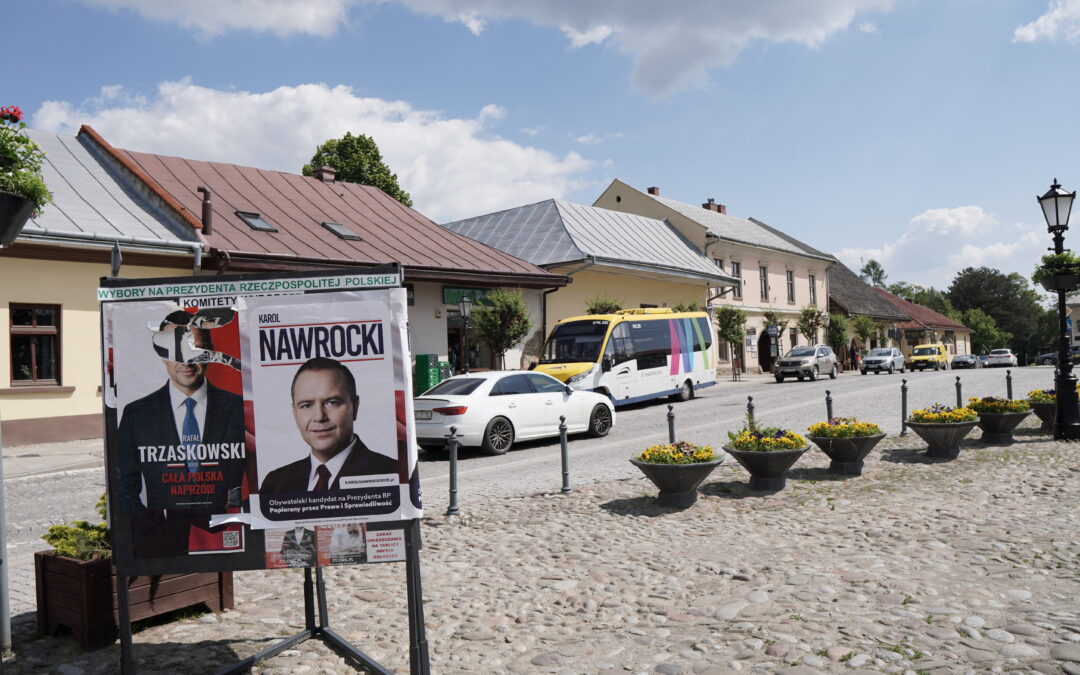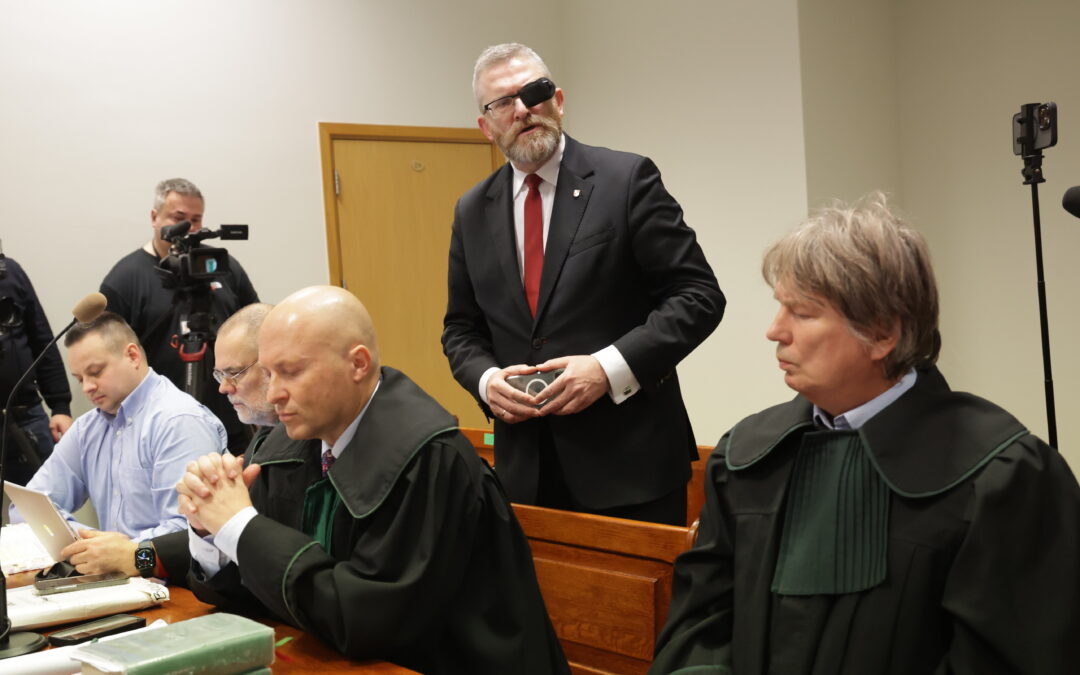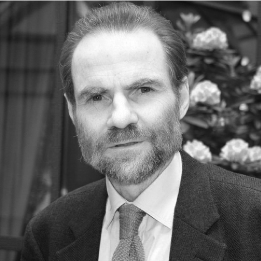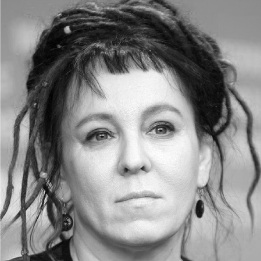Keep our news free from ads and paywalls by making a donation to support our work!

Notes from Poland is run by a small editorial team and is published by an independent, non-profit foundation that is funded through donations from our readers. We cannot do what we do without your support.
By Alicja Ptak
With less than two percentage points separating the winner from the runner-up, Poland’s presidential election was the tightest in the country’s post-communist history.
The final results from Sunday’s run-off vote showed that right-wing, opposition-backed candidate Karol Nawrocki won by a narrow margin, securing 50.89% against 49.11% for his centrist, government-aligned rival, Rafał Trzaskowski.
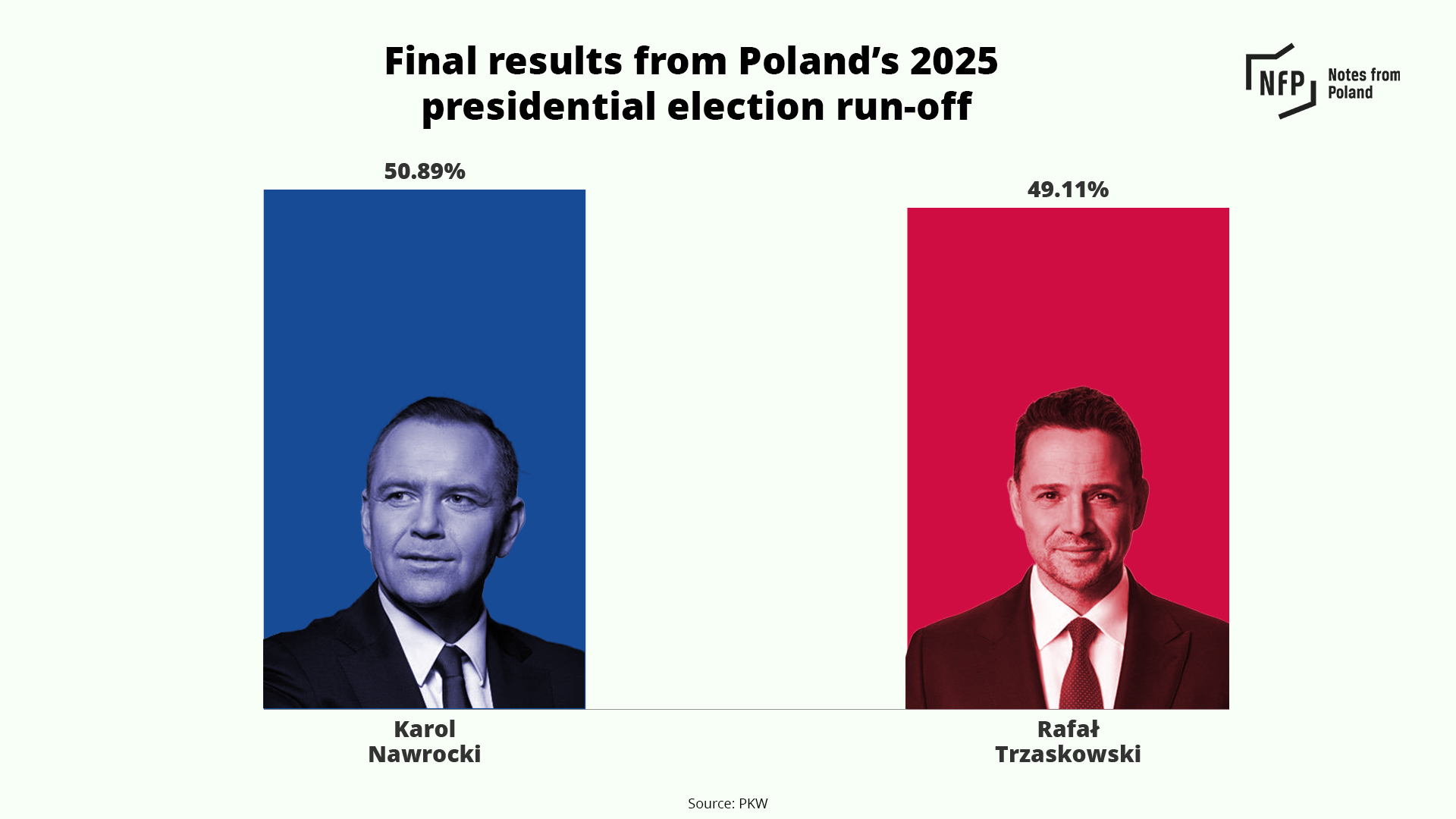
With the outcome now settled, exit poll data and official voting records reveal the trends that helped shape that result – from a shift among young voters to divisions in the diaspora and the behaviour of anti-establishment voters.
The youth vote
One of the most notable elements of this election were young voters, who turned out in high numbers and expressed frustration with Poland’s traditional duopoly of the centrist Civic Platform (PO) and national-conservative Law and Justice (PiS), who have dominated politics for two decades.
In the first round, young voters overwhelmingly rejected the two leading candidates, PO’s Trzaskowski and PiS-backed Nawrocki, who together secured just 24% of their vote. Meanwhile, more than half backed two anti-establishment figures: far-right Confederation (Konfederacja) leader Sławomir Mentzen and Adrian Zandberg of the small left-wing Together (Razem) party.
At Sunday’s run-off, turnout among those aged 18 to 29 was 76.3%, the second highest among any age group and much higher than the 64.3% among voters aged 60+, according to the exit poll.
A narrow majority of the 18-39 group, 53%, voted for Nawrocki, a stark reversal from five years ago, when 64% of them supported Trzaskowski when he stood against incumbent President Andrzej Duda, a PiS ally.
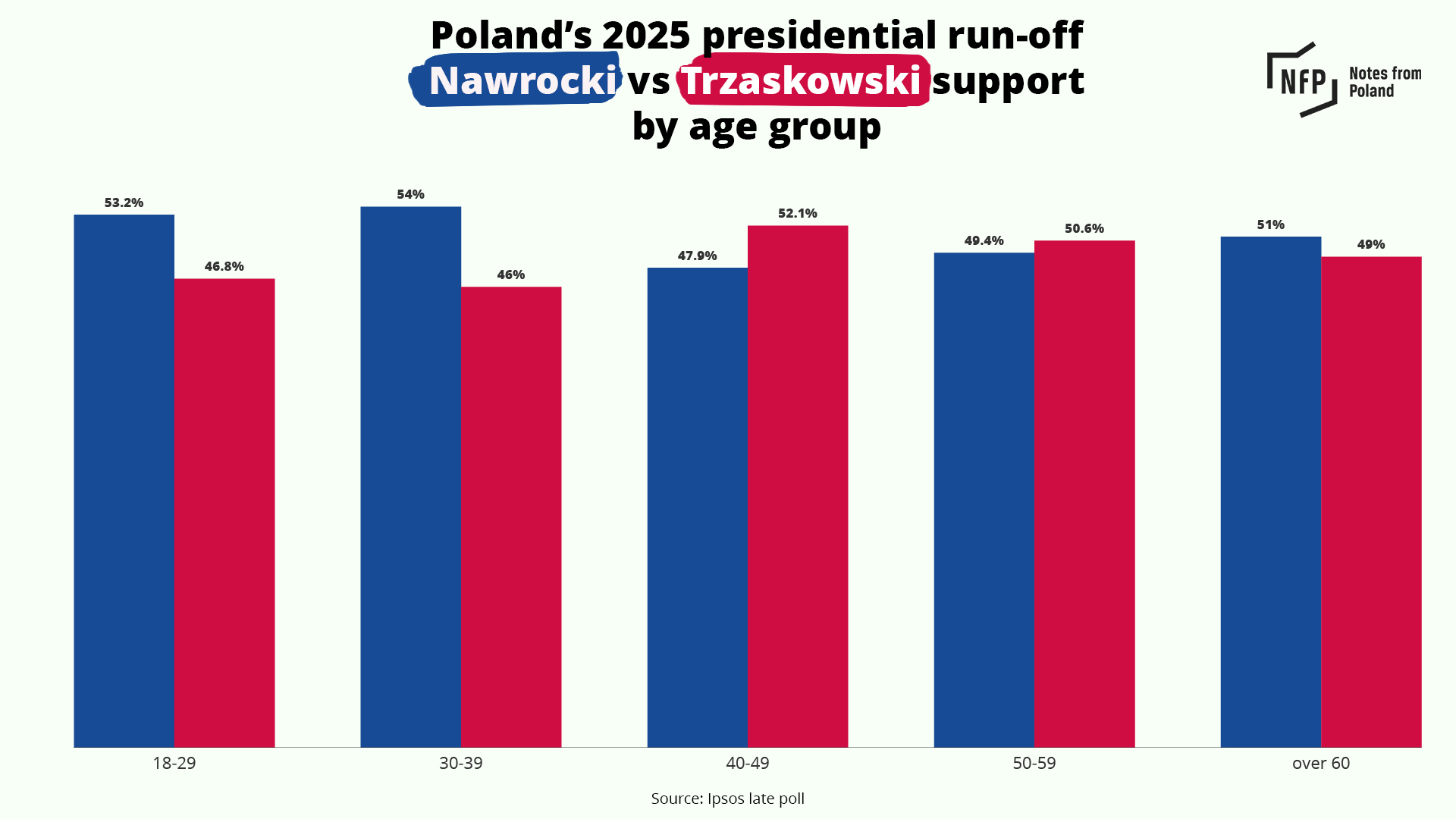
Voters of other candidates
Exit poll data also clarify how those who voted for candidates eliminated in the first round realigned their vote in the run-off.
Mentzen’s roughly 3 million supporters were seen as kingmakers, with both Nawrocki and Trzaskowski appearing on Mentzen’s YouTube channel ahead of the second round in an effort to appeal to them. Nawrocki clearly did more to win their favour, getting the support of 87% of those who had voted for Mentzen in the first round.
As expected, Trzaskowski was far more popular among those who voted for centrist and left-wing candidates Szymon Hołownia, Adrian Zandberg and Magdalena Biejat in the first around. However, Nawrocki still managed to attract some of their voters – including over 16.5% in the case of Zandberg.
It should be noted, though, that these data only show the outcome among those who turned out in the second round. They do not show how many supporters of eliminated candidates in the first round decided to stay away entirely from the second.

Poles abroad
Overall, among the 604,359 Polish citizens who voted abroad, almost two thirds, 63.5%, favoured Trzaskowski.
However, the diaspora in the United States, which has long been more conservative than its counterparts in western Europe, bucked this trend, with Nawrocki winning almost 57% of their votes.
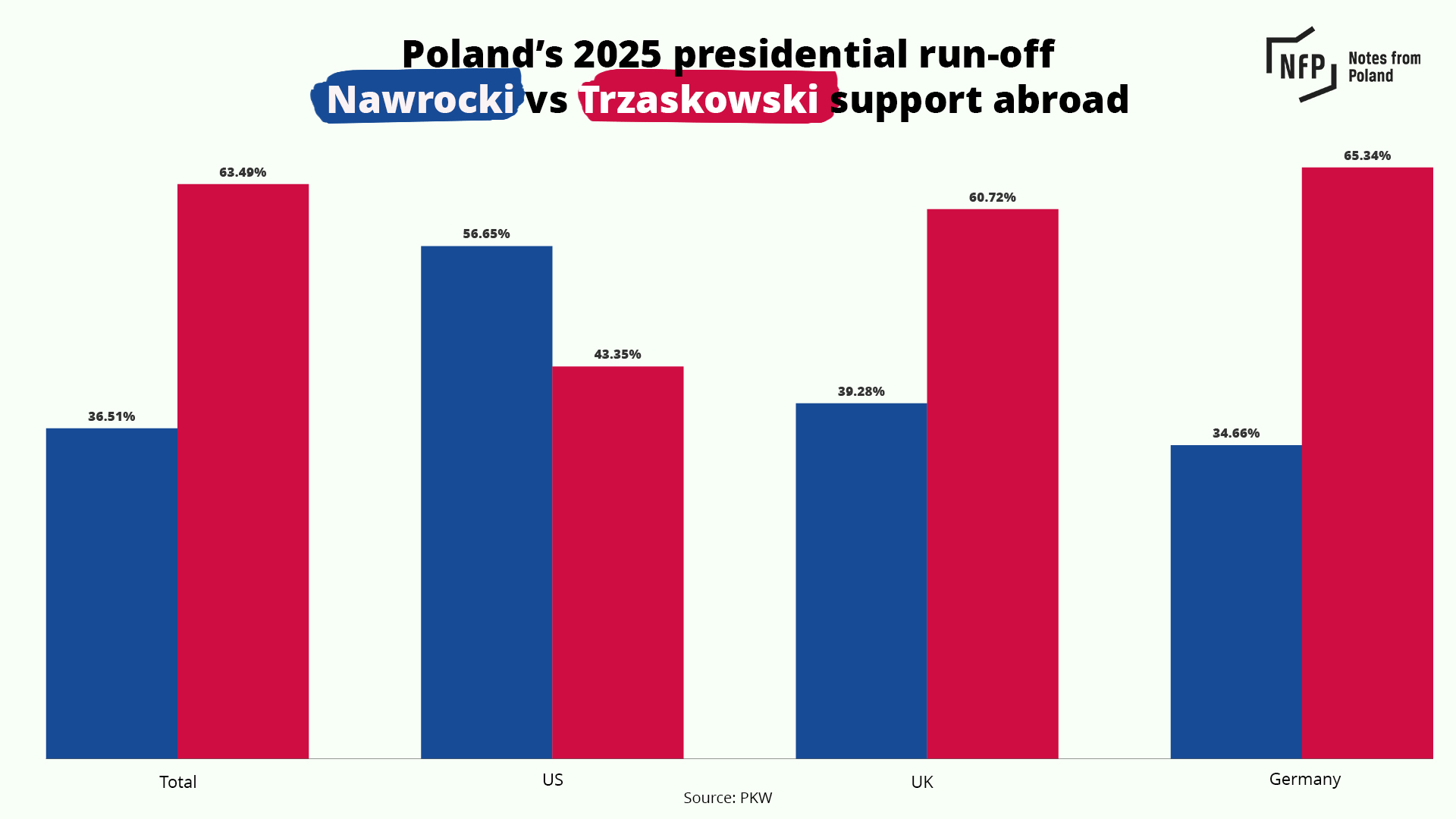
Women back Trzaskowski
Women turned out at a significantly higher rate than men – 73.9% compared to 69.2%.
However, although Trzaskowski – who had pledged during the campaign to support women’s rights, including by ending the near-total abortion ban – won a narrow majority of 52.8% among women, that was not enough to outweigh the 55.5% Nawrocki took among men.
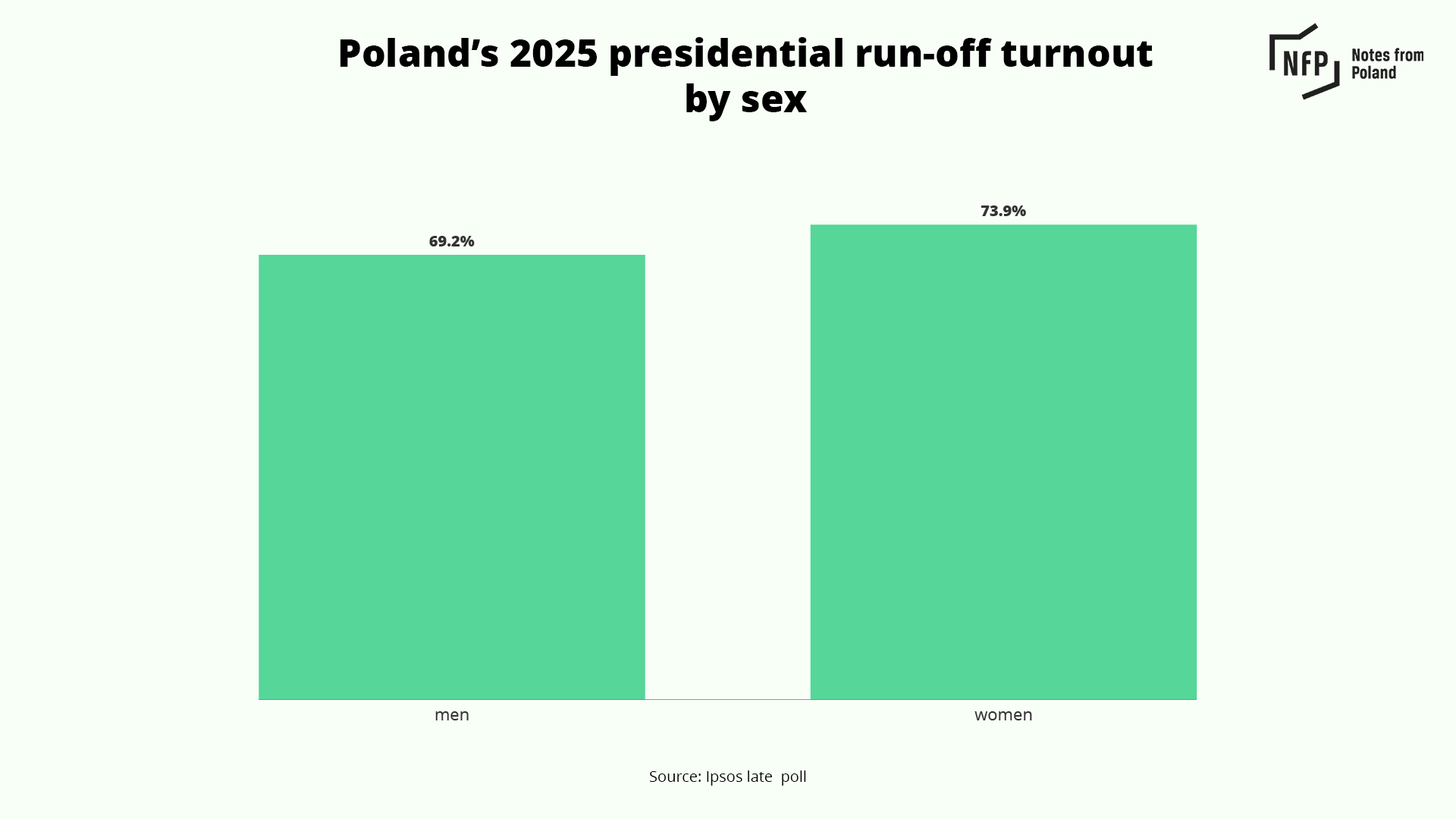
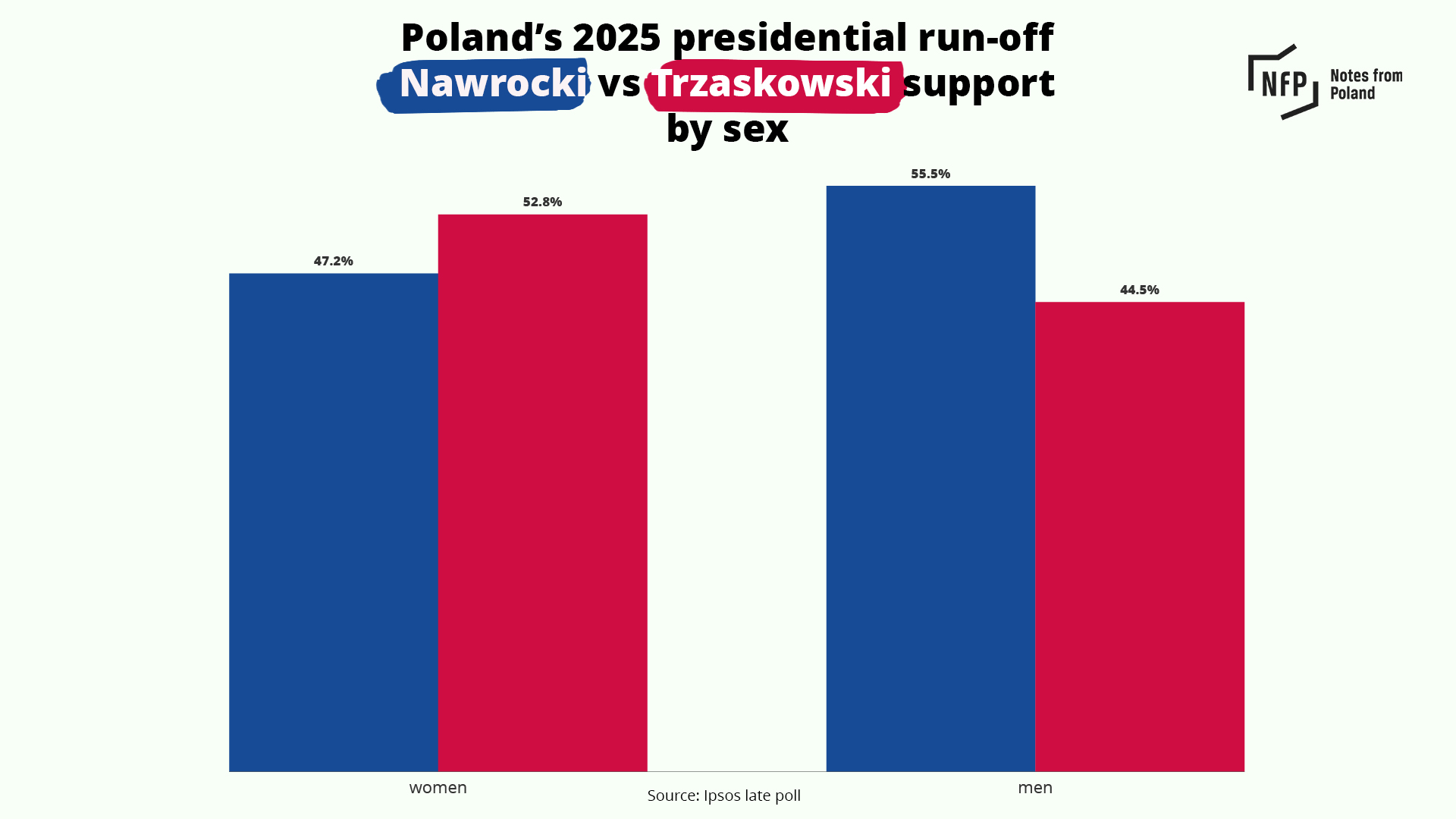
An urban-rural divide
As in prior Polish elections, voters displayed geographic divisions in their support.
Nawrocki swept rural Poland, taking 64.2% of the vote in villages. But Trzaskowski dominated the urban vote, winning 66.8% in cities with over 500,000 residents, 65.3% in mid-sized cities (201,000–500,000), and 57.1% in smaller urban areas (51,000–200,000).
In addition, the more conservative east of Poland leaned in favour of Nawrocki, while the more liberal west supported Trzaskowski.
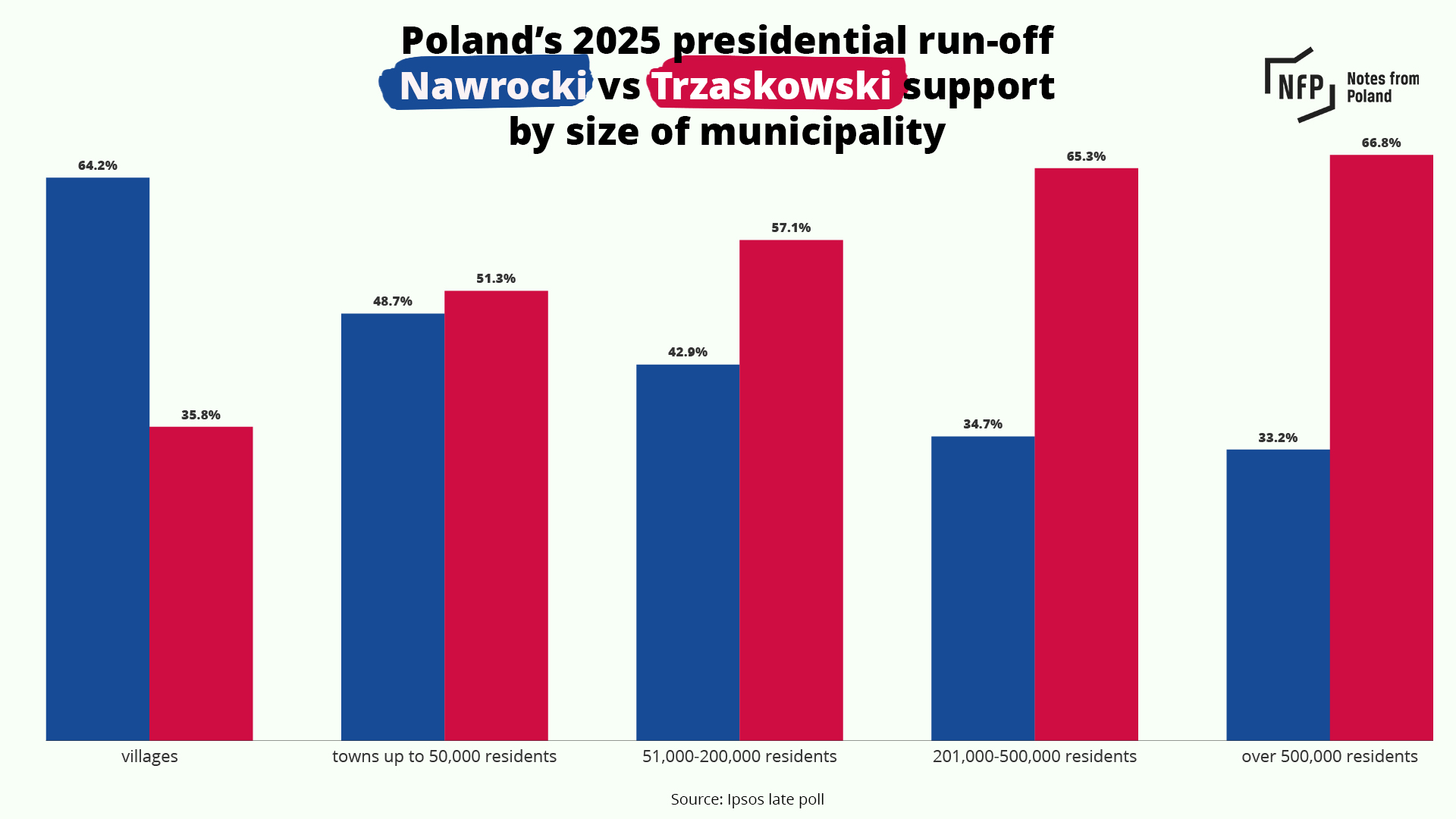

Education level remains a strong predictor of voting choice
Nawrocki won overwhelmingly among voters with only primary education (73.4%) and vocational training (68.1%). He also led narrowly among those with secondary or post-secondary but non-tertiary education, with 51.6%.
Trzaskowski, by contrast, dominated among university graduates, winning 62.6% of that group.
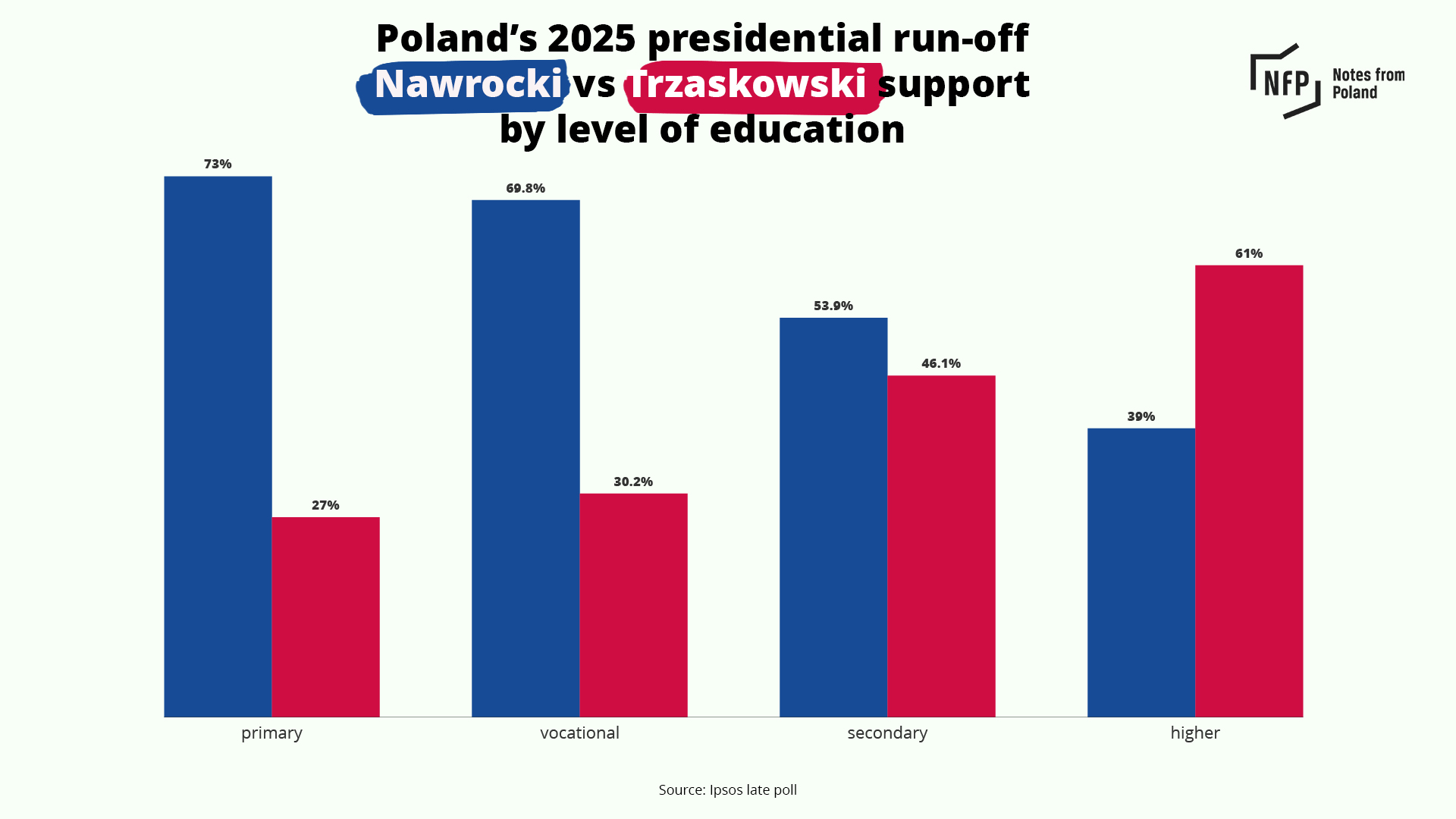

Notes from Poland is run by a small editorial team and published by an independent, non-profit foundation that is funded through donations from our readers. We cannot do what we do without your support.
Main image credit: Marta Blazejowska / Agencja Wyborcza.pl

Alicja Ptak is deputy editor-in-chief of Notes from Poland and a multimedia journalist. She has written for Clean Energy Wire and The Times, and she hosts her own podcast, The Warsaw Wire, on Poland’s economy and energy sector. She previously worked for Reuters.
